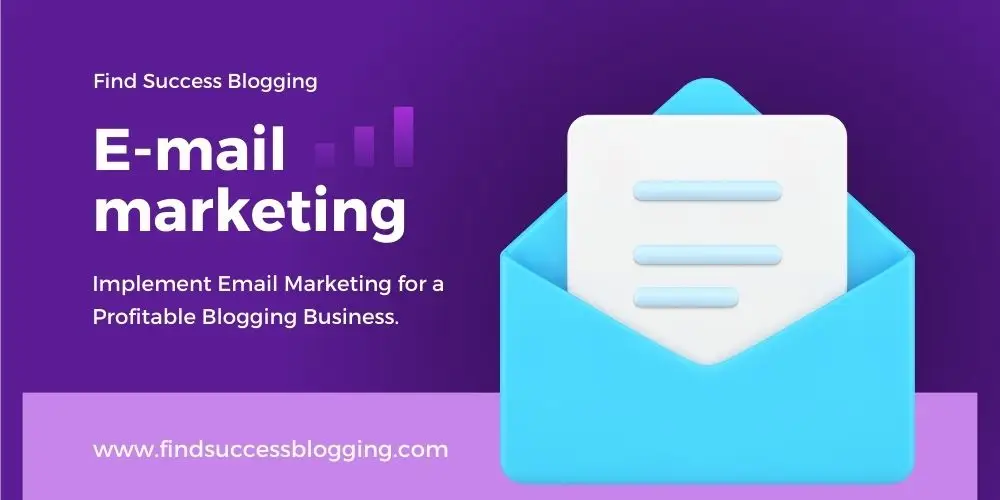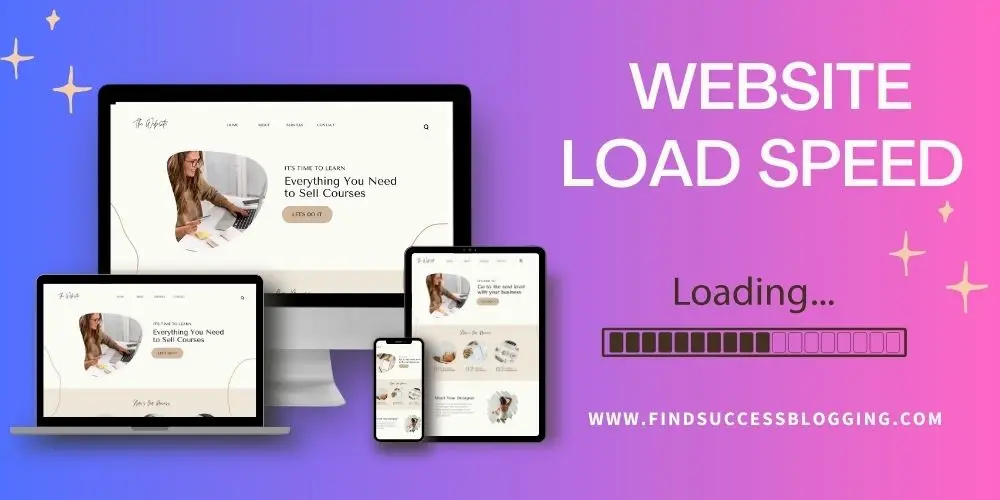A profitable blogging business is the dream of every blogger or website owner. Blogging has become a formidable tool in the digital age, offering individuals and companies a platform to share their thoughts, expertise, and passions with readers.
While it’s true that numerous factors affect a blog’s success, high-quality content remains a cornerstone.
Besides, research shows that websites with blogs have 434% more indexed pages. Also, companies that blog receive 97% more inbound links than those that don’t.
So, if you’re aspiring to build a profitable blogging business, you’re on the right track!
In this comprehensive guide, we’ll unveil 13 secrets to help you navigate the intricate world of blogging, from setting up your blog to monetizing it effectively.
So, whether you’re a beginner or a seasoned blogger looking to boost your income, these strategies will help you build a profitable blogging business.
Table of Contents
ToggleWhat are the Secrets to a Profitable Blogging Business?
1. Identify Your Niche
Choosing a niche is the foundation of a successful blogging business. Identifying a niche that aligns with your passions, interests, and areas of expertise is crucial for profitable blogging.
Niche identification allows you to establish yourself as an authority in a specific area and tailor your content to a targeted audience. For example, if you have a passion for fitness, you could specialize in writing about nutrition and exercise routines.
Advantages of narrowing your niche
- First, it helps you differentiate yourself from the vast global blogs, making it easier to stand out.
- Second, by focusing on a specific topic, you can develop in-depth knowledge to resonate with your readers and build trust.
- Last, a well-defined niche allows you to attract a dedicated audience and potential customers. These are clients interested in the content and products/services you offer.
|
To find your niche, consider your expertise, personal interests, market demand, and competition. Research niche-specific keywords and analyze the level of interest and competition for those keywords. Use tools like Google Trends and BuzzSumo to understand the popularity of topics within your niche. Remember, a well-chosen niche sets the stage for a successful blogging business. |
Discover top 10 reasons why website blogging is essential to your buinsess in this post.
2. Create Engaging Content

Content is king in the blogging arena. Creating engaging content that resonates with your audience is essential in building a profitable blogging business. Your content should offer value, educate, entertain, and inspire your readers.
Crafting high-quality blog posts involves combining your unique voice with well-researched information, actionable tips, and captivating storytelling.
Check this post and learn how to create engaging content that keeps readers returning.
Steps involved
- Understand your audience’s challenges and aspirations first. Then, create content that addresses their needs or inspires and motivates them.
- Use content formats such as how-to guides, listicles, case studies, interviews, or personal stories to keep your blog diverse and engaging.
- Incorporate visuals, such as images, infographics, and videos. This action enhances the visual appeal of your content and allows readers to share it.
- In addition to the quality of your content, consistency is vital. A regular publishing schedule helps you maintain a steady flow of fresh content. Doing so keeps your readers engaged and encourages return visits.
- Also, consistently publishing valuable content establishes your authority, builds trust, and keeps your blog relevant to readers and search engines.
| Remember, your blog is a platform to connect with your audience, so engage with them. Encourage comments, respond to queries, and foster a sense of community. Engaging with your readers builds loyalty and encourages them to become your brand advocates. |
3. Conduct Keyword Research for a Successful Blogging Business

Keyword research is a crucial aspect of search engine optimization (SEO) strategy. Relevant keywords optimize your content for higher ranking in search engine results pages (SERPs) and attract organic traffic.
First, brainstorm topics related to your niche. Next, discover opportunities using keyword research tools like Google Keyword Planner, SEMrush, or Ahrefs. These tools provide insights into search volume, keyword difficulty, and related keywords.
When conducting keyword research, aim to balance high search volume and low competition keywords.
Long-tail keywords with specific phrases effectively target a niche audience and rank higher in SERPs.
Also, consider the intent behind keywords. For instance, are people looking for information, product reviews, or solutions to their problems? Aligning your content with user intent enhances the relevance and value of your blog posts.
Integrate keywords naturally throughout your content. The step includes using keywords in headings, subheadings, meta titles, meta descriptions, and within the body of your text.
But beware of keyword stuffing, which can harm your SEO efforts. Focus on creating high-quality, informative content that addresses the needs of your audience while strategically incorporating relevant keywords.
| Remember, SEO is an ongoing process, so regularly analyze keyword performance using tools like Google Analytics and adjust your strategy accordingly. |
4. Optimize On-Page SEO

On-page SEO refers to optimizing various elements on your blog to enhance its visibility in search engines. Following on-page SEO best practices increases the chances of your blog posts ranking higher in search results.
How to optimize your on-page SEO
- First, optimize your meta titles and descriptions. These elements should be concise, compelling, and accurately represent the content of your blog post. Also, incorporate relevant keywords naturally while ensuring they make sense to readers.
- Second, use header tags (H1, H2, H3, etc.) to structure your content. Headers make it easier for search engines and readers to navigate your content.
- Reserve the H1 tag for the main title of the blog post and the H2 and H3 tags for subheadings and sections within your post.
- Incorporate relevant keywords in these headings where appropriate, as it can provide additional context to search engines.
- Another crucial on-page SEO technique is internal linking. Ensure to link to other relevant blog posts within your site to guide readers to related content.
Doing so enhances user experience and keeps readers on your website longer. Also, it encourages search engines to crawl and index your pages more thoroughly.
- Moreover, external linking to authoritative and relevant websites can boost your blog’s credibility and add value to your readers. When linking externally, use keyword-rich anchor text and choose reputable sources.
- Last, optimize your images by providing descriptive and keyword-rich alt tags. As a result, the search engines can understand the graphical content, improve accessibility, and drive image search traffic to your blog.
| On-page SEO techniques improve the visibility and accessibility of your blog for both search engines and readers. Also, it attracts more organic traffic. |
5. Build Strong Relationships for a Profitable Blogging Business

Building solid relationships with fellow bloggers, influencers, and your audience is essential in the blogging industry. These relationships can significantly impact your blog’s visibility, reach, and potential for collaboration and growth.
Start by reaching out to other bloggers in your niche. Connect with them through social media, comment on their blog posts, and build genuine relationships.
Also, look for opportunities to collaborate on guest posts, interviews, or collaborations. These options can expose your blog to a broader audience.
In addition, partnerships provide mutual benefits by leveraging each other’s strengths, expanding your reach, and attracting new readers.
Also, participate in relevant forums, engage in discussions within your niche, and provide valuable insights and solutions.
Sharing your expertise and assisting others builds your reputation and positions you as an authority within the community.
Check this post and learn why website blogging is the future of business branding
Use social media to build relationships.
Social media platforms are crucial in connecting with your target audience and building relationships. So, identify the platforms where your audience is most active and engage with them.
Share your blog posts, ask questions, respond to comments, and spark discussions. Also, participate in conversations and provide valuable content on social media actively. Doing so enhances your brand visibility and establishes you as a valuable resource within your niche.
| Remember, building relationships takes time and effort. Be authentic, supportive, and genuinely interested in others. Nurture these relationships over time, and they can become a valuable asset for your successful blogging business. |
6. Utilize Social Media

Besides building relationships, social media platforms are powerful tools for promoting your blog. Also, these platforms increase visibility and audience engagement.
So, when used strategically, social media can be a significant change in building a profitable blogging business.
Social media strategies
- First, identify which social media platforms align with your target audience. Some popular options include Facebook, Twitter, Instagram, Pinterest, LinkedIn, and YouTube. Each platform caters to different demographics and content formats, so choose wisely.
- Once you’ve chosen the platforms, create a consistent brand presence. Use your blog’s logo, colors, and tone of voice to maintain a cohesive identity.
- Optimize your social media profiles by writing compelling and keyword-rich bios. Include appealing cover photos and links to your blog and other relevant social media channels.
- Regularly share your blog posts on social media, but don’t just stop there. Engage with your audience by posing questions, sharing behind-the-scenes content, conducting polls, and leveraging trending topics.
- Visual content, like images and videos, performs better on social media, so incorporate them. Captions are crucial in capturing attention, so craft compelling captions that accompany your content.
- Encourage social sharing with sharing buttons on your blog posts. As a result, readers can easily share your content across their social networks, increasing your blog outreach.
- Last, engage with your audience by responding to comments, messages, and mentions. Appreciate their support, answer their questions, and build a sense of community.
Fostering relationships and engaging with your audience creates a loyal community of followers who support and promote your blog.
7. Implement Email Marketing for a Profitable Blogging Business

Email marketing is an effective strategy to communicate with your readers, boost blog traffic, and generate leads and sales. You can share with people genuinely interested in your content and products/services with an email list.
Steps to implement email marketing
Offer lead magnets or opt-in incentives on your website to encourage visitors to subscribe to your email list.
These incentives can include free e-books, exclusive guides, checklists, or discounts. Create compelling landing pages that highlight the value your subscribers will receive.
Choose an email marketing service provider like ActiveCampaign, Constant Contact or FluentCRM to manage your email campaigns.
These platforms offer helpful features, making audience engagement at scale easier. Features include automated email responses, segmentation, and analytics,
When crafting your emails, provide value to your subscribers. Also, share exclusive content, behind-the-scenes insights, and personalized recommendations.
Regularly send newsletters highlighting your latest blog posts or curated content from your niche. But remember to balance promotion with valuable content to avoid overwhelming your subscribers with sales pitches.
Segment your email list based on subscriber interests and behavior to send targeted emails that align with their preferences. Personalization and relevance in email marketing can significantly improve engagement rates and conversion.
In addition, keep your emails visually appealing and mobile-friendly. Use eye-catching designs, concise copy, and clear calls to action.
Test different subject lines and email formats to optimize open and click-through rates.
Also, regularly analyze your email performance metrics, such as click-through and conversion rates. This data provides insights into the effectiveness of your email campaigns, allowing you to refine your strategies for better results.
| Email marketing is your overall blogging strategy to nurture relationships with your audience and turn them into loyal readers and customers. |
8. Monetize Strategically

Monetizing your blog or website is essential in building a profitable blogging business. There are several monetization methods to consider. The key is to choose the ones that align with your niche, audience, and content.
Display advertising
One popular method is display advertising with platforms like Google AdSense, Ezoic, or Mediavine. These platforms allow you to display ads on your blog for earnings depending on impressions or clicks.
Sponsored content
Collaborating with brands and writing sponsored blog posts or reviews can be a lucrative way to generate income.
Ensure that the sponsored content aligns with your niche and provides value to your audience. Be transparent about sponsored posts to maintain trust with your readers.
Affiliate marketing
Recommend products or services you believe in and receive a commission for each sale generated through your affiliate links. Join affiliate networks like Amazon Associates, ShareASale, or CJ Affiliate. Then, browse their product listings and find relevant offerings for your audience.
Digital products
Create and sell personalized digital products like e-books, online courses, templates, or software tools.
Besides, digital products offer scalability and the potential for higher profit margins than physical ones. Use your experience to develop valuable resources for your audience.
Memberships or subscriptions
Offer exclusive content, premium resources, or membership programs where subscribers can access specialized content or services. Provide added value to your members to incentivize them to subscribe and stay engaged.
Services or consultations
If you have specialized knowledge or expertise, offer services or consultations in your niche. These include coaching, freelance writing, social media management, graphic design, or any skill aligning with your blog.
|
Remember to choose monetization methods that align with your audience’s needs. Also, maintain the integrity of your content and provide a positive user experience. In addition, experiment with different methods. Track the results to find the right balance that generates revenue without compromising the trust and loyalty of your readers. |
9. Consistency is Key
Consistency is crucial in building a successful blogging business. Regularly publishing fresh content establishes consistency, builds a loyal readership, and improves your blog’s visibility.
Discover how to avoid blogging mistakes and become a successful blogger
So, develop and follow an editorial calendar to plan and schedule your blog posts in advance. As a result, you maintain a consistent flow of content, avoid gaps or periods of inactivity, and meet the expectations of your audience.
Also, content planning helps you brainstorm ideas, research, and prepare high-quality articles.
Consistency applies not only to publication frequency but also to the quality and value of your content.
Always strive to deliver high-quality posts that provide value to your readers. Also, focus on producing evergreen and relevant content.
In addition, incorporate timely topics and trends to keep your blog fresh and responsive to your audience’s interests.
| Building a successful blog takes time, and knowing that results won’t happen overnight is crucial. However, consistency, dedication, and patience are crucial to a profitable blogging business. |
10. Optimize Website Load Speed
Website load speed is one of the most critical aspects of user experience and search engine rankings aspects.
After all, optimizing your website’s load speed is crucial for a profitable blogging business. Here are some strategies to improve your website’s performance:
-
First, choose a reliable and fast hosting service.
Look for a reputable hosting provider with high uptime and fast servers optimized for website speed. Popular options include Namecheap, Hostinger, and Hostgator.
-
Optimize your website’s code and minimize unnecessary elements.
Reduce the size of image files without sacrificing quality by using compression tools and plugins like TinyPNG. Also, minify your CSS and JavaScript files to remove excess characters and improve loading times.
-
Implement browser caching to store certain website elements on a user’s device.
This way, when readers visit your site, their browser loads the stored elements instead of fetching them again. It can significantly improve load times for returning visitors.
-
Use a Content Delivery Network (CDN).
A CDN delivers your website’s content from servers located geographically closer to your visitors. Also, CDNs reduce latency and provide faster loading times by serving content from the server nearest to the user’s location.
-
Remove redundant tools.
Optimize your website’s database by removing unnecessary plugins, themes, or files that are no longer used. Regularly clean up your database to improve its efficiency and reduce loading times.
-
Enable lazy loading for images and videos.
Lazy loading ensures that only the elements visible to the user on the screen load initially, while the rest of the content loads as the user scrolls down. This technique improves initial page load times.
WordPress has popular plugins for installation that allow lazy loading for graphical content.
Check this post and learn why WordPress is the best blogging platform for your business website
-
Use online tools to measure site speed.
Regularly monitor and test your website’s speed using tools like Google Page Speed Insights or GTmetrix. These tools provide insights and recommendations for improving page load times
|
Remember, a fast-loading website improves user experience and reduces bounce rates. Also, a fast site can positively impact your search engine rankings, leading to a profitable blogging business and increased traffic. |

11. Optimize for Mobile Devices to Build a Profitable Blogging Business
With the rise in the demand for smartphones and tablets for internet browsing, optimizing your blog for mobile devices is crucial. Here are some key strategies:
-
Use a responsive design for your website.
A responsive design automatically adjusts the layout and content based on the screen size. As a result, it provides an optimal viewing experience across different devices. Also, it ensures that your blog is easily accessible and readable on mobile devices.
-
Compressing images.
Optimize images for mobile by compressing them and using the appropriate dimensions for mobile screens.
Large photos can significantly slow mobile page load times and negatively impact user experience. So, consider different image resolutions based on the device’s screen size.
-
Ensure that your website’s fonts are legible on mobile devices.
Use an easily readable font size without zooming in and mobile-friendly fonts. Test your blog on various mobile devices to ensure the fonts display correctly.
-
Reduce pop-ups.
Minimize intrusive pop-ups that obstruct the user experience on mobile devices. Google’s algorithm penalizes websites that display intrusive pop-ups on mobile. So, use them wisely or consider alternative strategies for capturing leads or promoting content.
-
Test for mobile responsiveness.
Regularly test your blog’s mobile-friendliness using tools like Google’s Mobile-Friendly Test. These tools provide insights and suggestions for improving the mobile experience of your blog.
| Optimizing your blog for mobile devices provides mobile users with a seamless and enjoyable experience. As a result, your site will receive increased mobile traffic, engagement, and profitability. |
12. Analyze and Adapt With Monitoring Analytics

Regularly analyzing and adapting your blogging strategy is essential for long-term success. Here’s what you should do:
Use analytic tools
A tool like Google Analytics can monitor and analyze your blog’s performance.
So, use it to track critical metrics, such as traffic sources, bounce rates, page views, and conversion rates. This data helps you understand your audience, identify trends, and make data-driven decisions.
Track your progress
Set specific goals and track your progress to achieve them. Whether it’s increasing traffic, growing your email list, or generating revenue, clearly defined plans help you focus your efforts and measure your success.
Experiment with different strategies and tactics.
Test different types of content, publishing frequencies, social media platforms, email marketing campaigns, and monetization methods. Track the results and identify what works best for your audience.
Stay updated
Stay updated with industry trends and algorithm changes, and adapt your strategies accordingly. The blogging landscape is constantly developing. So, staying informed and adjusting your approach to remain competitive is essential.
Seek audience feedback
Continuously seek feedback from your audience. Encourage comments, conduct surveys or polls, and listen to your readers’ suggestions or concerns. Feedback provides valuable insights and helps you improve your content, user experience, and overall profitable blogging business.
| Remember, analyzing your data, adapting to changing circumstances, and making informed decisions are vital to staying relevant and profitable in a successful blogging business. |
13. Stay Passionate and Persistent

Building a profitable blogging business requires passion, persistence, and dedication. It’s not an overnight success, but a journey that requires consistent effort.
Stay passionate about your niche and the content you create. Your passion will sustain you during challenging times and inspire you to improve and deliver value to your audience continually.
So, be persistent and never give up. A successful blogging business takes time and comes with many challenges. Therefore, commit to your goals, learn from your failures, and keep advancing.
In addition, educate yourself and stay updated with industry trends, new techniques, and evolving best practices. Attend conferences, read books and blogs, and participate in online communities to expand your knowledge and network with fellow bloggers.
| Overall, celebrate your milestones, no matter how small. Recognize your achievements and use them as motivation to keep pushing forward and reaching for bigger goals. |
Conclusion for Building a Profitable blogging business
In conclusion, building a profitable blogging business requires strategic planning and consistent effort. Also, it needs a deep understanding of your niche and audience.
With these 13 secrets, you can set a firm foundation and create valuable content. Also, you can optimize your site for visibility and user experience, monetize effectively, and adapt to changing trends.
Remember, success doesn’t happen overnight, so stay consistent, keep learning, and enjoy your blogging business journey. Later, your business will thrive and become a reliable source of income and fulfillment.
With these secrets, it’s time to unleash your creativity and build a successful blogging business.
Happy blogging!
| Do you know other ways to help readers learn how to build a profitable blogging business? Please share them in the comment section below, or let us know your opinions about this post.
Don’t forget to subscribe to our newsletter for updates on our latest posts. Also, if you enjoyed reading this post, share this message with your friends on Facebook, Twitter, and other social media sites. Let’s find success in blogging together. |
Related posts:
- Top 13 Blogging for Business Success Secrets Revealed
- From Blog to Business: Transform Your Passion into a Profitable Venture
- Successful Blogging Strategies to Launch Your Online Business
- Top 10 Proven Blogging Tips for Success in your Business
- Top 10 Reasons Why Blogging on Your Website is Essential to Your Business








